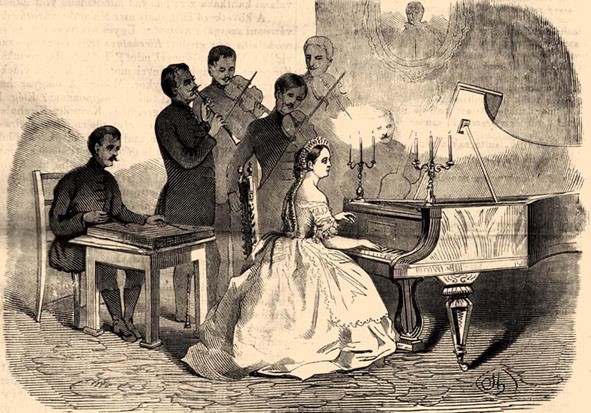
Few countries can boast such interesting folk instruments as Hungary. The instruments, which are an integral part of the incredibly rich and fascinating Hungarian culture, are incredibly diverse. They all come with very interesting histories.
The ancient version of the woodwind instrument tárogató, one of Hungary's national symbols, originates from the zurma, popularised by the Turks in the Middle Ages and modern times. This name was used synonymously with töröksip (Turkish pipe) to describe the Turkish instrument. The first known source, in which the name was written, comes from the time of the First Austrian-Turkish War, which took place in 1525-1541 and started with the Ottoman invasion of Hungary. The instrument was usually about 30-40 centimetres long, a slightly tapered body with a funnel-shaped extension, six to eight finger holes and a thumb hole
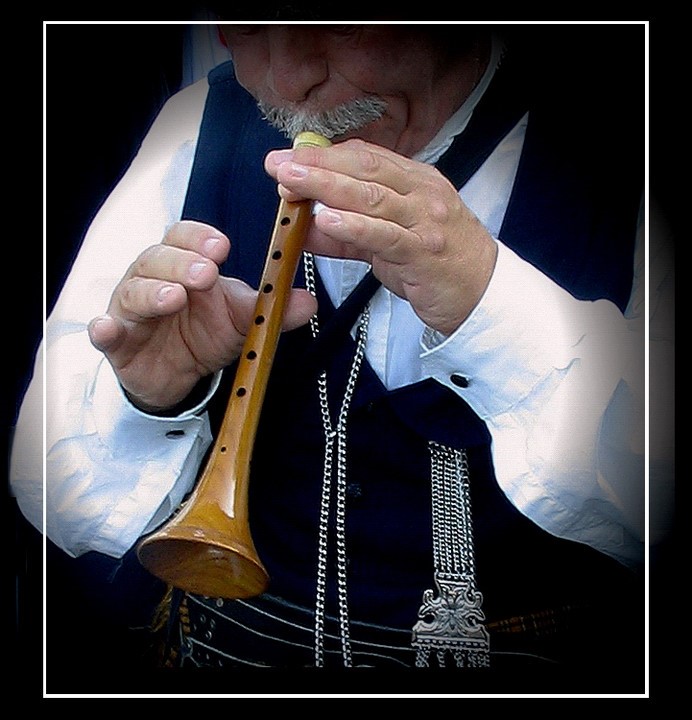
A musician playing on a historical Turkish version of zurma, originally from Persia, called tárogató or töröksip in Hungary
It was relatively loud, which is why it was widely used in the army as a signalling instrument, but also during funerals, weddings and other ceremonies. The loudness of the tárogató was used by the insurgent army (the so-called kuruc - armed insurgents, mainly peasants, who were fighting in Hungary against the Habsburg power) under the command of the Hungarian national hero, Duke of Transylvania, Franz II Rákóczi, who fought during the anti-Habsburg and independence uprising of 1703-1711, known in historiography as the Rákóczi Uprising. According to Dr. Milosevic from Vancouver College in Canada, the penetrating sound of the tárogató signal was noticeably reducing the morale of Austrian soldiers and was so effective that the use and production of this instrument, which became a symbol of freedom and national liberation for Hungarians, was banned. The Holy Roman Emperor from 1705 to 1711, Joseph I Habsburg, after the Austrian army won the battle of Zsibó, demanded that all tárogatós be destroyed, along with the factories and tools used for their production. This instrument appeared in common use many years later in the middle of the 19th century.

Eighteenth-century illustrations depicting musicians playing different versions of the historical tárogató
The piece Rákóczi megtérése in the arrangement for piano and tárogató performed by Miklós Vesztergám.
In the second half of the 19th century there were more and less successful attempts to "refresh" the outdated tárogató. Albert Skripsky built a new kind of this instrument in 1860, but its sound was not consistent with 19th century musical ideals. At the end of the century, Vencel József Schunda, a famous Budapest-based music instrument maker, worked on an instrument that was slightly larger and much more complicated than the historical tárogató. After several years of experiments to construct tárogatós suitable for use in symphony orchestras, Schunda obtained a patent for his new instrument in 1897 – this is how his contemporary tárogató, which is still used today, was born. It is worth mentioning that fifty years later, history came round in a circle and the use of the Schunda instrument was forbidden during the bloody communist dictatorship of the Secretary General of the Hungarian Workers' Party, Mátyás Rákosi from 1945-1956, due to the strong independence and patriotic associations associated with this instrument.
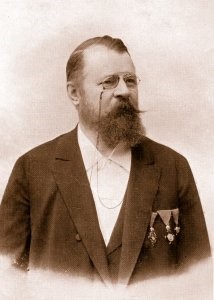
A photograph depicting the outstanding Hungarian musical instrument maker Vencel József Schunda (1845-1923), the father of the contemporary tárogató. He worked with his brother József (1818-1893), who established a workshop in Pest in 1848. Vencel helped his brother to build instruments from 1856 onwards and then became the owner of the entire factory.

Graphics showing a new version of tárogató created by Vencel József Schunda, patented in 1897.
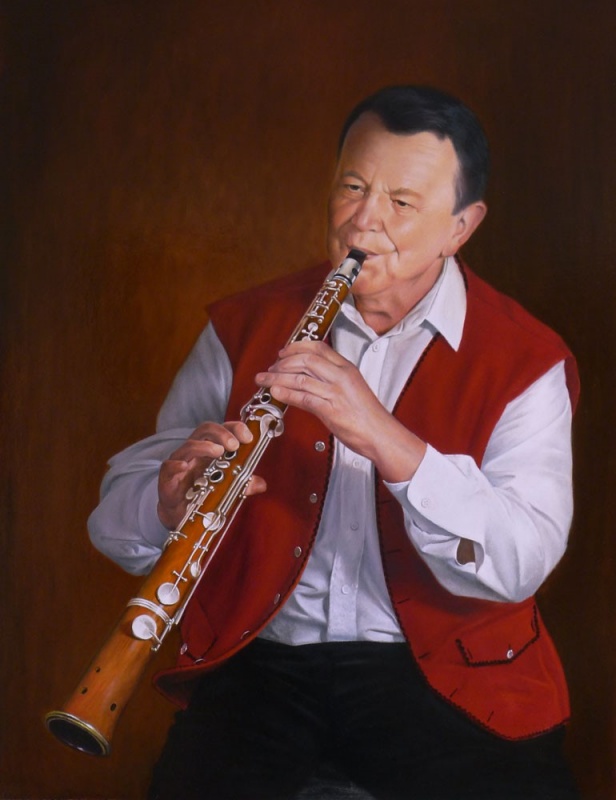
A musician playing a contemporary version of the tárogató.
The modern tárogató has a single reed, such as clarinet or saxophone, and consists of a cylindrical wooden (usually rosewood or boxwood) pipe with openings with flaps. Unlike the strong and sharp sound of the historical version of the instrument, the new tárogató, which has little in common with the noisy counterpart used several hundred years earlier (it was once even suggested to use the name schundafon instead of tárogató to distinguish it from the historical version of the instrument), has a relatively mild sound, while maintaining excellent acoustic properties. This instrument can sometimes be heard when performing the Shepherd's Aria from the third act of the famous opera Tristan and Isolde by Richard Wagner – as some orchestras use it in that fragment instead of an English horn. The tárogató was also successfully used by Hungarian operetta composers. The second most outstanding (after Ferenc Lehár) composer of the silver Viennese operetta, Imre Kálmán, used it in his 1932 three-act operetta The Devil's Rider. Lehár himself used tárogató in his operetta Gypsy love together with another characteristic instrument - Hungarian cimbalom.
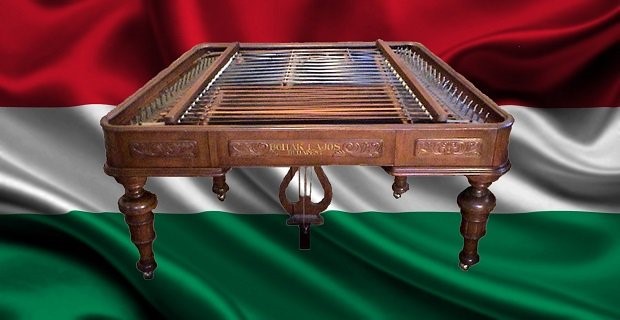
Another instrument which is a kind of musical symbol of Hungary is the cimbalom – a string musical instrument from the chordophone group. The first known representation of a primitive instrument of this type dates back to the mid-4th millennium BC. Cimbaloms appeared in Hungary most probably in the first half of the 16th century. They are mentioned in documents drawn up during the reign of King Louis II Jagiellonian (1508-1526).
Cimbaloms with 10 to 20 strings gained popularity in Poland in Podkarpacie as well as Warmia and Mazury. This instrument became widespread on Polish soil in the 17th century. Similar instruments are also known in France (tympanum), Scandinavian countries (hackbrett), England (dulcimer), Switzerland, Austria, The Czech Republic (cymbal), Belarus, Romania, Russia (цимбалы), Ukraine (цимбали) and the Baltic States, where cimbole (Latvia) and cimbolai (Lithuania) have from 12 to 26 strings and a maximum three-octave range. It is worth mentioning that equivalents of the cimbalom are also known in the Far East - in Korea under the name yanggeum, and in China - yangqin.
The contemporary "concert" Hungarian version of the cimbalom was created by the aforementioned master Vencel József Schund in the 1870s in Budapest. The body of this instrument, which has a range of four octaves, has the shape of a trapezoid with sides of 140 and 95 centimetres long, on which strings are stretched. The whole is set on feet measuring about 70 centimetres. The instrument produces a distinctive and loud sound, which is produced by hitting metal strings with wooden sticks. The original, smaller and mobile version of the cimbalom from the sixteenth century, known as the kiscimbalom, is still used in the Balkans, Switzerland, Romania, Belarus and the western part of Hungary. This instrument is made almost entirely of pine wood, with a small addition of maple. In contrast to the concert version of Schunda, these cimbaloms are limited in use by professional musicians and usually do not have any metal stiffeners, which results in susceptibility to body deformation.

A concert version of the cimbalom, created by master Vencel József Schunda.
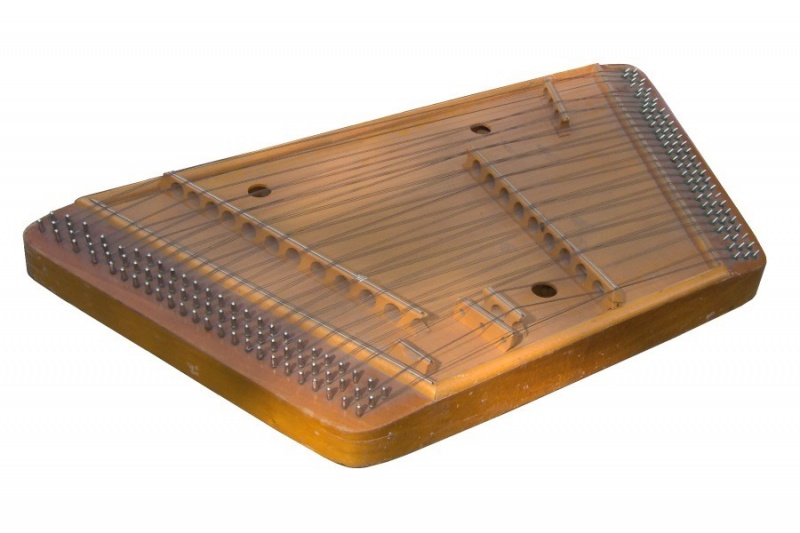
Kiscimbalom – a small portable cimbalom.
The first composer to introduce the cimbalom to opera music was the creator of the Hungarian national opera Ferenc Erkel. He used them in his masterpiece, the famous three-act opera Bank Ban, staged in 1861, and then six years later in the five-act opera Dózs György. Franz Liszt used cymbals in orchestral versions of his famous piano rhapsodies. Béla Bartók and Zoltán Kodály, eminent Hungarian composers and ethnographers who initiated scientific research on Hungarian folk culture, also used cimbaloms in their compositions. Bartók used them in the Rhapsody No. 1 for violin and orchestra from 1928 and Kodály in his four-bar opera Háry János from 1926.
Intermezzo from Zoltán Kodálya's opera Háry János performed by Junko Sakimura (cimbalom) and the Japan Friendship Philharmonic. Conductor: Atsushi Takahashi.
The cimbalom was also used, among others, by Russian composers - Igor Stravinsky repeatedly diversified the perfect musical layer of his famous compositions with their characteristic sounds. It can be heard in Ragtime for eleven instruments (1918), the Renard (1916) and Les Noces (1923) ballets or the original version of Four Russian Peasant Songs for mezzo-soprano, flute, cimbalom and guitar (1954).
Ragitme for eleven instruments by Igor Stravinsky. Performed by: Toni Koves (cimbalom) and the Columbia Symphony Orchestra, conducted by Igor Stravinsky himself.
Adam Bielecki
